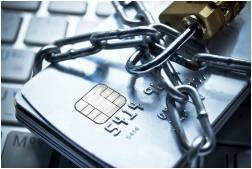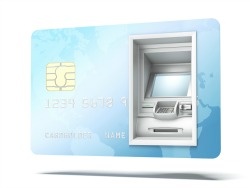Why the World Will NOT End When EMV Chargeback Liability Shifts
 We are just one month away from the EMV chargeback liability shift, and many card issuing banks and credit unions are rushing to get the new chip technology in the hands of consumers. Retailers in the US are growing nervous about upgrading their POS terminals. Consumers are annoyed by all the new credit cards they're receiving in the mail, and confused about what to do with the chip cards when they finally find themselves at an EMV-capable machine. Retail clerks are learning how to run checkouts using the new chip cards, finding themselves in the unwanted position of educating irritated consumers. Despite all these hiccups in the adoption of EMV technology and the hype surrounding its rollout, I have news for you: much like the hype leading up to Y2K, the world will NOT end in October.
We are just one month away from the EMV chargeback liability shift, and many card issuing banks and credit unions are rushing to get the new chip technology in the hands of consumers. Retailers in the US are growing nervous about upgrading their POS terminals. Consumers are annoyed by all the new credit cards they're receiving in the mail, and confused about what to do with the chip cards when they finally find themselves at an EMV-capable machine. Retail clerks are learning how to run checkouts using the new chip cards, finding themselves in the unwanted position of educating irritated consumers. Despite all these hiccups in the adoption of EMV technology and the hype surrounding its rollout, I have news for you: much like the hype leading up to Y2K, the world will NOT end in October.
First, at the beginning of 2015, less than a third of credit cards were chip-enabled, and even fewer debit cards carried the chip. By the end of 2015, it's estimated that 70% of credit cards will be chip-enabled. That's an impressive projected jump, but debit cards are estimated to still be lagging at only 40%. So while great strides are being made to upgrade US cards, not everyone will have EMV cards by October as some news reports would have you believe.
Second, according to CNBC, only slightly over 40% of US retailers have even committed to EMV. In the end, it's these merchants who have the biggest exposure to risk by not adopting EMV, since chargeback liability will now be on their shoulders should they resist the move. So why not a bigger push to upgrade terminals ASAP? Because retailers aren't falling for all the hype. Many have realized that they're not at risk, or are at very little risk of chargebacks, and have elected not to upgrade at this time.
Reasons retailers are not rushing to adopt EMV
Consider just a few of these reasons retailers are electing to not adopt EMV, per this post from payment processor, Solupay: "7 Reasons NOT to adopt EMV". Below are the 3 most common factors identified in the article:
- The retailer only accepts transactions in a "Card Not Present" (CNP) environment: The EMV Chargeback Liability Shift only pertains to "card present" transactions, since the technology is in the chip embedded in the card. Just 29% of shopping events are "in-person only" today, according to the Marketing Research Association. So while EMV helps the security of these transactions, Card Not Present transaction fraud is expected to increase by more than 100 percent by some estimates after EMV's adoption in the US!
- The cost to support EMV is greater than the chargeback risk: If the retailer's customers don’t typically file disputes for fraudulent reasons, and the chargeback risk is extremely low, even if they do a good number of face-to-face transactions the cost of upgrading their POS equipment may outweigh the costs incurred with chargebacks.
- The merchant knows their customer base: Some merchants know their customer base very well, and don't fear chargebacks. If they do not know them, they ask for a form of identification or verify the last 4 digits of the credit card. Problem solved.
There is no doubt that the EMV push is a good thing for reducing credit card fraud and improving security. In nations that have adopted EMV, credit card fraud for Card Present Transactions has decreased dramatically. The United Kingdom, for example, saw a 32.5 percent reduction from 2004 to 2011 after the introduction of chip-based cards. But the reality is that EMV is only one part of the security puzzle. Credit Unions should work with their members and small business clients to realize the bigger picture of credit and debit card security. They should consider implementing security features, such as remote controls for cards, that empower members to have greater control over their credit card security, and approach EMV with the priority it warrants.



